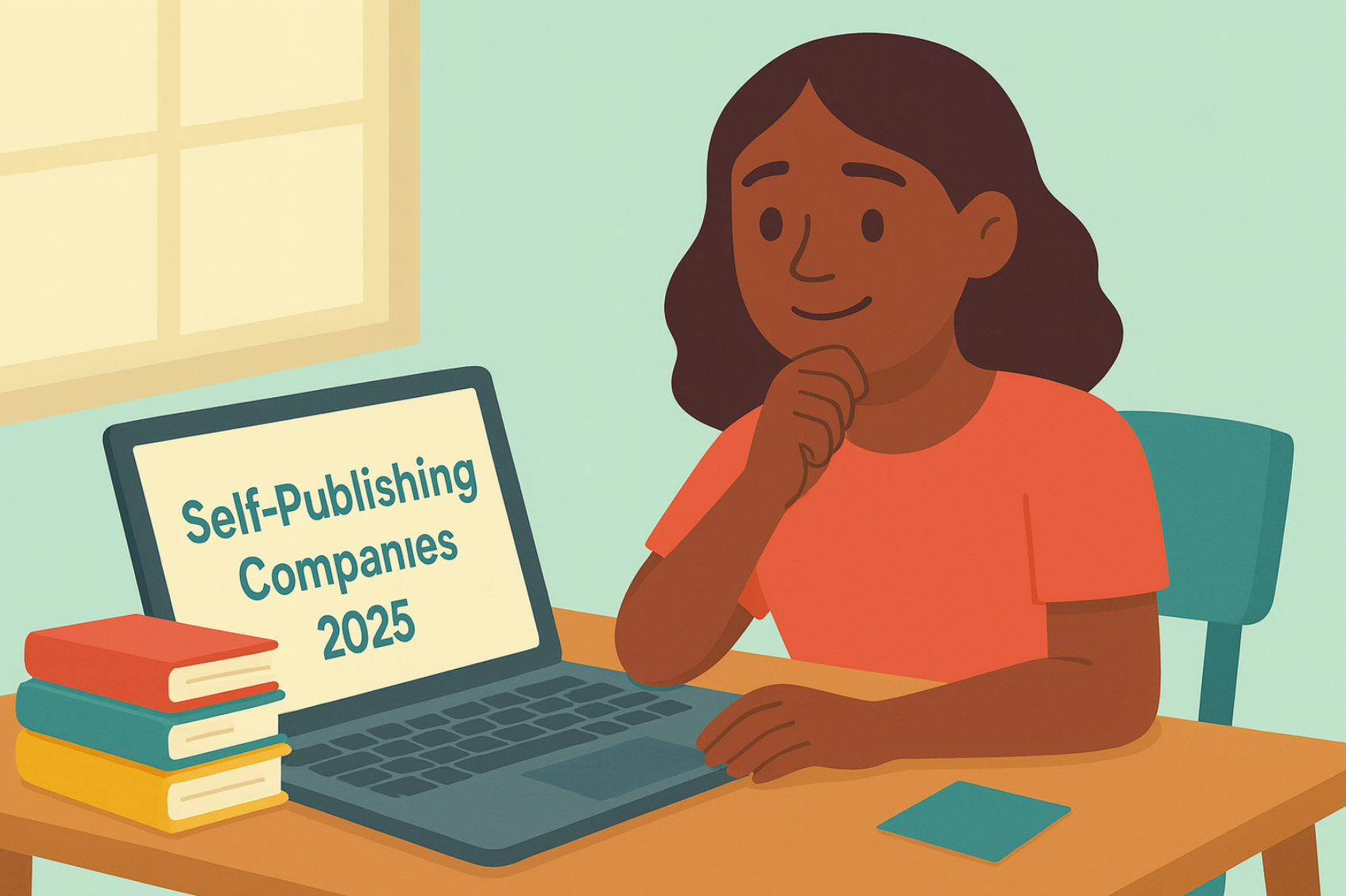Self-publishing has revolutionized the book industry, offering authors unprecedented control and creative freedom over their work. Unlike traditional publishing, self-publishing allows writers to retain their rights, set their own schedules, and receive a larger share of the profits. This approach has democratized the publishing world, enabling countless writers to share their stories without the barriers imposed by traditional gatekeepers.
Choosing the right self-publishing platform is crucial to an author’s success. The ideal platform can significantly impact a book’s reach, quality, and profitability. Each platform offers unique features, services, and distribution options, making it essential to understand what aligns best with an author’s specific needs and goals. From user-friendliness and cost-effectiveness to marketing tools and global reach, the right choice can streamline the publishing process and maximize an author’s potential in the competitive book market.
Understanding Self-Publishing
Self-publishing is the process where authors can self publish a book independently, without relying on traditional publishing houses. This approach offers numerous benefits, including complete creative control, higher royalty rates, and faster time-to-market. Authors can decide every aspect of their book, from cover design to marketing strategies.
In contrast, traditional publishing involves submitting manuscripts to publishing houses, where acceptance rates are low and the process can be lengthy. Traditional publishers handle editing, design, and distribution, but they also take a significant portion of the profits and control over the book’s final form and marketing efforts.
The Best Self-Publishing Companies: Key Factors to Consider
When choosing a self-publishing platform, several key factors should be considered to ensure a successful publishing journey.
- Cost: The cost of self-publishing can vary widely between platforms. Some offer free services with a percentage of sales taken as a commission, while others charge upfront fees for various services like editing, cover design, and marketing. It’s important to evaluate your budget and understand the pricing structure of each platform. Additionally, comparing the costs of different self-publishing companies can help you find the best value for your needs.
- Ease of Use: A user-friendly platform can make the publishing process smoother and less stressful. Look for platforms with intuitive interfaces, comprehensive guides, and robust customer support to help you navigate through the process. Different self-publishing company platforms offer varying levels of user-friendliness, so it’s essential to choose one that matches your technical comfort level.
- Distribution Reach: The ability to distribute your book widely is crucial. Platforms like Amazon KDP offer extensive global reach, while others might have more limited distribution channels. Ensure the platform can reach your target audience, whether through major retailers, online bookstores, or niche markets.
- Marketing Tools: Effective marketing is essential for book sales. Consider platforms that offer robust marketing tools, such as promotional services, social media integration, and analytics. These tools can help you build your author platform, increase visibility, and track the success of your marketing efforts.
Spines
Spines is ideal for both new and experienced authors seeking a quick, cost-effective way to publish their books. They are a cutting-edge self-publishing platform offering a range of self-publishing services and audiobook services, and features designed to simplify and accelerate the publishing process.
Features:
- Leverages AI technology to provide services for all book formats.
- Publishing eBooks and audiobooks.
- Print-on-Demand (POD)
- User-friendly dashboard that facilitates every step
- Proofreading and editing
- Formatting and cover design
- Global distribution across 100+ channels, including top retailers like Amazon and Barnes & Noble.
Pros:
- Rapid publishing process.
- Affordable.
- Dedicated support.
- published books in less than 30 days (depended on manuscript readiness).
- Personal Production Managers guide authors through the process.
Cons:
- Reliance on advanced technology.
- Can be overwhelming for those less tech-savvy.
Suitability for Different Authors: The platform is particularly beneficial for authors looking to leverage global distribution and advanced marketing tools to maximize their book’s visibility and sales. Spines’ comprehensive support and user-friendly interface make it accessible to authors with varying levels of tech experience.
Amazon Kindle Direct Publishing (KDP)
Amazon KDP is a leading self-publishing platform offering a range of features designed to simplify the publishing process, especially as an ebook publishing platform.
- Allows authors to upload their books with ease.
- Provides tools for formatting eBooks and print books, global distribution, and access to Kindle Unlimited and Kindle Owners’ Lending Library.
- Authors can easily upload their manuscripts, create or upload their book covers, and set their pricing.
Pros:
- Extensive reach.
- Ease of use, and competitive royalty rates of up to 70% for eBooks.
- Offers promotional tools like Kindle Countdown Deals and free book promotions.
Cons:
- Exclusivity requirements can limit distribution to other retailers.
- Large volume of content can make it challenging to stand out.
KDP is ideal for both new and experienced authors looking for a straightforward, cost-effective way to publish their books with broad exposure. It’s particularly beneficial for authors who want to leverage Amazon’s massive customer base and robust marketing tools to maximize their book’s visibility and sales.
Your Publishing Journey Awaits – Start NowApple Books
Apple Books is a prominent platform for self-publishing eBooks, offering a seamless integration with Apple’s ecosystem.
Key Features:
- Authors can publish their books directly to a global audience.
- Benefit from Apple’s robust retail presence.
- Utilize promotional tools like pre-orders and price adjustments.
- Supports a variety of formats and provides detailed sales analytics.
Best Practices for Publishing:
- Focus on high-quality formatting and cover design to meet Apple’s standards.
- Utilize promotional tools effectively, such as setting up pre-orders and engaging in periodic price promotions, as this can boost visibility and sales.
- Optimize book descriptions and keywords to enhance discoverability in the Apple Books store.
Google Play Books
Google Play Books offers several advantages for self-publishing authors through various benefits such as:
Advantages:
- A straightforward publishing process.
- Flexible pricing options.
- Access to Google’s powerful search and discovery algorithms.
- Authors can update their books easily.
- Utilizing promotional pricing to attract readers.
Market Reach:
- The platform provides extensive global reach, making books available in over 75 countries.
- Their broad distribution network allows authors to tap into diverse and international markets, potentially increasing their readership and sales.
- Being part of the Google ecosystem enhances discoverability through integrated search capabilities and cross-promotion with other Google services.
Blurb
Blurb is a versatile self-publishing platform that specializes in print-on-demand services and eBook publishing.
Print on Demand and eBooks: Blurb’s easy-to-use design tools and templates make it simple for authors to produce professional-looking books. It allows authors to create high-quality printed books, including:
- photo books,
- trade books,
- magazines,
- eBooks.
Specialty Markets: Blurb is particularly popular among authors targeting niche markets, such as photographers, artists, and designers, due to its emphasis on high-quality print products. Its integration with creative software like Adobe InDesign and Lightroom further enhances its appeal to these specialty markets, enabling the creation of visually stunning publications.
IngramSpark
Wide Distribution Network: IngramSpark is renowned for its extensive distribution network, providing self-publishing authors with access to over 39,000 retailers, libraries, and schools worldwide. This broad reach ensures that books published through IngramSpark can be easily discovered and purchased by a global audience.
Print-on-Demand Services: IngramSpark excels in print-on-demand services, allowing authors to produce high-quality printed books without large upfront costs. This service includes benefits like:
- A variety of formats and binding options
- Print-on-demand model
- Reduces waste and storage costs
- Economical
- Environmentally friendly
Lulu
Print on Demand: Lulu is a self-publishing platform known for its robust print-on-demand services, allowing authors to produce high-quality printed books in various formats, including:
- Hardcover.
- Paperback.
- Coil-bound.
This model eliminates the need for large print runs and upfront costs, making it a cost-effective option for authors.
Niche Focus: Lulu caters to niche markets, offering specialized publishing solutions for authors with unique needs. It is particularly popular among creators of academic works, technical manuals, and creative projects. Lulu’s customization options and comprehensive distribution channels help authors effectively reach their target audiences in specific, niche markets.
BookBaby
Comprehensive Publishing Services: BookBaby provides a full suite of publishing services, making it a one-stop shop for authors. These services include:
- Editing.
- Cover design.
- Formatting.
- Distribution for both eBooks and print books.
BookBaby’s professional assistance ensures that authors can produce high-quality books ready for the market.
Marketing Tools: In addition to publishing services, BookBaby offers robust marketing tools to help authors promote their work. These tools include options for social media promotion, email marketing campaigns, and book promotion packages. BookBaby’s marketing support helps authors increase their book’s visibility and reach a broader audience effectively.
Print-on-Demand Services (POD)
Explanation and Benefits: Print-on-demand (POD) services allow authors to print books as they are ordered, eliminating the need for large print runs and reducing upfront costs. This model minimizes waste and storage expenses while offering flexibility in book production. Authors can easily update their books without the need to discard existing inventory.
Top Providers: Some of the leading POD service providers include
- Amazon KDP.
- IngramSpark.
- Spines.
- Lulu.
- Blurb.
These platforms offer a variety of printing options, from paperback to hardcover, and provide global distribution networks, ensuring that books can reach a wide audience efficiently and cost-effectively.
Choosing the Best Platform for Your Needs
Matching Goals with Platform Strengths: Selecting the right self-publishing platform involves aligning your specific goals with the strengths of each platform.
- If wide distribution and global reach are priorities, platforms like Amazon KDP and IngramSpark are excellent choices.
- For authors focused on high-quality print products and niche markets, Blurb and Lulu offer specialized services.
- If digital sales and promotional tools are key, Smashwords and Draft2Digital provide robust eBook distribution and marketing features.
Budget Considerations: Your budget plays a crucial role in choosing a platform.
Some platforms, like Amazon KDP and Smashwords, have no upfront costs, taking a percentage of sales instead.
Others, such as BookBaby and IngramSpark, may require upfront fees for their comprehensive services, including editing, cover design, and marketing.
Evaluating the cost structures and potential return on investment for each platform will help ensure that you choose the most cost-effective solution for your publishing needs. Balancing your budget with your goals will lead to a more strategic and successful self-publishing journey.
Your Publishing Journey Awaits – Start NowMarketing Services and Tools
Effective marketing is crucial for the success of any self-published book. Without proper promotion, even the best-written books can remain unnoticed. Marketing helps to build visibility, attract readers, and ultimately drive sales.
Platform-Specific Tools: Many self-publishing platforms offer specialized marketing tools to help authors promote their books. For instance,
- Amazon KDP provides options like Kindle Countdown Deals and free book promotions.
- BookBaby offers social media promotion and email marketing campaigns.
- Platforms like Draft2Digital offer universal book links, making it easier to share books across multiple retailers.
These tools are designed to enhance your book’s discoverability and reach, ensuring that your marketing efforts are both effective and efficient.
Reaching a Worldwide Audience: Global distribution is essential for authors seeking to reach readers across the globe. Self-publishing platforms with robust international distribution networks ensure that your book is accessible to a diverse and widespread audience, increasing your potential for higher sales and global recognition.
Creative Control and Flexibility
One of the biggest advantages of self-publishing is the ability to maintain full creative control over your book. Authors can make all decisions regarding content, cover design, formatting, and pricing without external interference, ensuring that their vision is accurately represented.
Customization Options: Self-publishing platforms offer a wide range of customization options. From choosing the book’s size and binding type to selecting fonts and layout designs, authors can tailor every aspect to their preferences. This flexibility allows for unique and personalized books that stand out in the market, catering to specific audiences and enhancing the overall reading experience.
Royalties and Earnings
Royalty Rates Comparison: Royalty rates in self-publishing can vary significantly between platforms. For instance, Amazon KDP offers up to 70% royalties on eBooks priced within a specific range, while platforms like Spines and BookBaby offer 100% royalties. Print-on-demand services like IngramSpark and Lulu typically offer lower royalties but provide valuable distribution options.
Long-Term Earning Potential: Self-publishing offers substantial long-term earning potential as authors retain control over their pricing and rights. With consistent marketing and updates, a self-published book can generate income over many years, unlike traditional publishing, where books might go out of print. The flexibility to publish multiple titles and reach global markets further enhances the potential for sustained earnings.
User Experience and Support
A user-friendly platform can significantly enhance the self-publishing experience. These helpful features can improve the publishing experience and expedite the process astronomically
- Intuitive interfaces.
- Easy to upload manuscripts.
- Format books.
- Manage sales.
- Clear instructions.
- Helpful tutorials.
Customer Support: Reliable customer support is crucial for addressing any issues that arise during the publishing process. Top platforms offer robust support through various channels, including email, live chat, and phone. Responsive and knowledgeable support teams can provide timely assistance, helping authors resolve technical problems and optimize their publishing efforts.
Final Tips for Choosing the Best Self-Publishing Companies for You
To select the best self-publishing platform, authors should match their specific goals with the strengths of each platform and consider their budget carefully. Platforms offering extensive distribution, user-friendly interfaces, and robust marketing tools are ideal for maximizing reach and sales potential. Ultimately, the right choice will depend on your individual needs and aspirations. By thoroughly researching and strategically choosing a platform, authors can navigate the self-publishing journey successfully and achieve their literary dreams.
Your Publishing Journey Awaits – Start NowFAQs – Best Self-Publishing Companies 2025
Q: Is self-publishing growing?
Yes, self-publishing is growing rapidly, and many authors are turning to relevant self-publishing options for their publishing needs. The number of self-published books has increased by 264% in the last 5 years according to WordsRated. With the rise of digital platforms and print-on-demand services, authors can now publish their books independently, gaining creative control, higher royalties, and the ability to reach a global audience.
Q: What is the most successful self-published book?
The most successful self-published book to date is Fifty Shades of Grey by E.L. James. Initially self-published through platforms like those offered by the best self-publishing sites, it became a global bestseller and was later picked up by a traditional publisher. This book’s success helped demonstrate the potential of self-publishing in today’s market.
Q: What is the highest-rated self-publishing company?
Some of the best self-publishing companies in 2025 include Spines, IngramSpark, KDP (Kindle Direct Publishing), and Lulu. These platforms are highly rated by authors due to their ease of use, quality printing options, excellent distribution networks, and competitive royalty structures, making them the top choices for independent authors in 2025.
Q: Is it cheaper to self-publish or use a traditional publisher?
It is often cheaper to self-publish through the finest self-publishing companies, as authors usually handle the costs for editing, design, and marketing themselves. While traditional publishers offer financial support for these services, they take a larger percentage of royalties and rights. Therefore, self-publishing can be more cost-effective, especially when working with top platforms like those in this list.
Q: Can self-published authors get their books into libraries and bookstores in 2025?
Yes, self-published authors can get their books into libraries and bookstores in 2025, though it may require additional effort. Services like IngramSpark allow self-published authors to distribute their books to major retail chains and libraries worldwide. Libraries can also access self-published books through platforms like OverDrive, which helps authors reach library patrons. For bookstores, self-published authors can work with independent retailers or use distributors like BookBaby or Kobo to make their books available for physical shelves. However, the process may involve higher upfront costs for physical copies and additional steps to convince stores to carry independent titles.
Q: What are the biggest challenges self-published authors face in 2025?
The biggest challenges self-published authors face in 2025 include standing out in a saturated market, marketing and promoting their books effectively, and managing the costs of production, such as editing, cover design, and marketing services. Authors also face the challenge of maintaining consistent sales and finding the time and resources to invest in building an audience. Additionally, understanding the complex aspects of copyright, distribution options, and royalty structures can be overwhelming for new authors.







